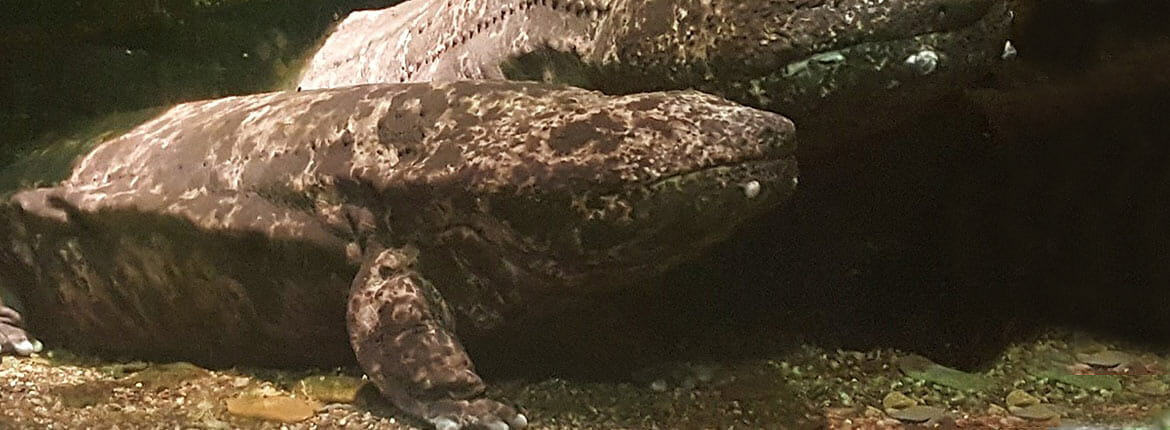Welfare impacts of a new home for Japanese giant salamanders
In general, the welfare of amphibians and reptiles is under studied, and much remains to be learned about how to optimize their welfare in human care. Japanese giant salamanders (JGS) are fully aquatic, nocturnal salamanders found only in Japan. These fascinating amphibians can be up to five feet in length and are cousins of the smaller North American hellbenders. Japanese giant salamanders are found in fast moving streams, where they forage along riverbeds for crabs and other small prey. To reproduce, a successful male must establish himself as a “den master”, enticing females into his den to lay eggs, which he cares for until they hatch. These enigmatic creatures live in few zoos and do not reliably breed in these settings. Challenges for wild populations include dams that block migration routes and other anthropogenic changes to their habitats.
In 2018, the five JGS residing at the Detroit Zoo will move into a newly created habitat in the former Rainforest Immersion Gallery in the National Amphibian Conservation Center. This larger habitat will allow for multiple den locations and for all the salamanders to live as one social group. The purpose of this investigation is to evaluate the impacts of the move and the new habitat on the welfare of the JGS using a combination of physical, hormonal and behavioral measures. The new habitat has been modeled after Japanese breeding facilities, and a major intention of the move is to encourage reproductive behaviors and propagation. Thus, reproductive behavior will be closely monitored and the successful production of offspring is considered to be a sign of positive welfare for these individuals. For this investigation, new techniques, such as analyzing hormone levels in naturally shed skin, are being developed that will add to our knowledge of how to measure and improve welfare for many amphibian species.



